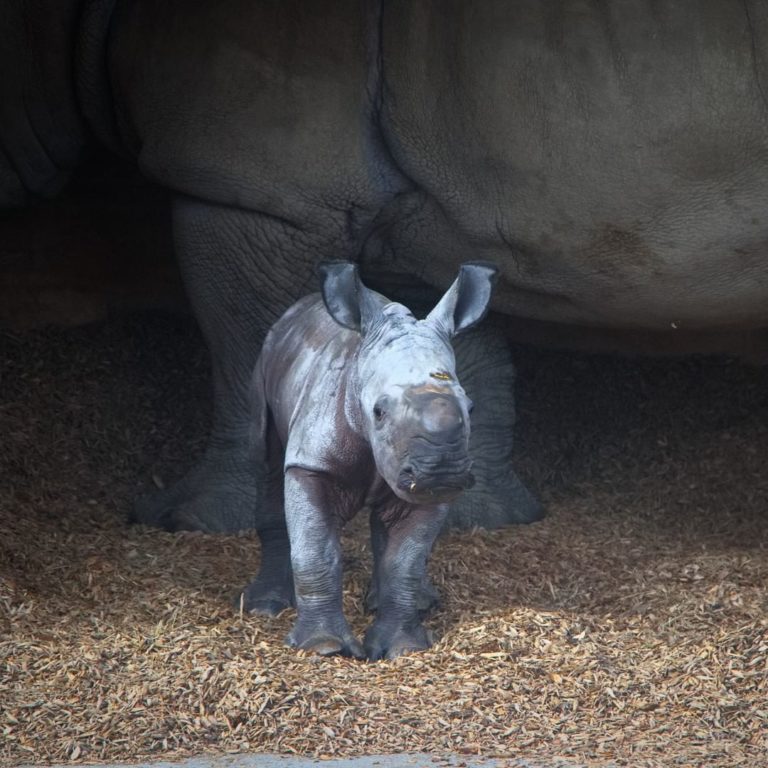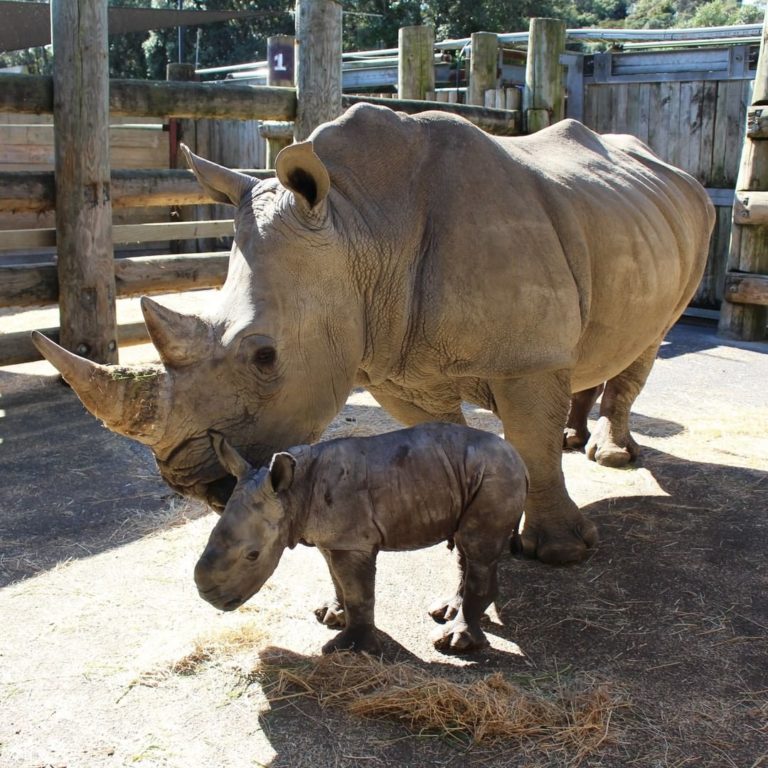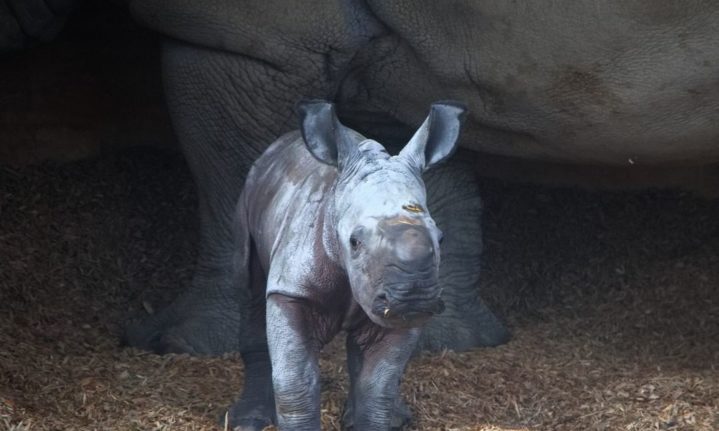Auckland Zoo in New Zealand have welcomed a rhino calf for the first time in 20 years. The birth forms part of their Australasia breeding programme.
The currently unnamed week-old female southern white rhino calf was born on August 14 to parents Jamila and Zambezi.

The calf is the first born to the zoo in 20 years. Credit: Instagram / Auckland Zoo
‘This sturdy female calf, with a birth weight of around 65kgs, was born in the early hours of August 14th in a speedy one-hour labour,’ the Zoo said in a statement.
‘Rhino gestation lasts 16-months in total and faecal testing for progesterone levels provided a great indicator of when Jamila would give birth. With the support of Panasonic New Zealand, we were able to install and utilise low light security camera equipment that allowed our ungulates team to monitor Jamila’s pregnancy at all hours of the day – both at the Zoo and from home.’
Mom Jamila arrived at the Zoo in 2018 from the Hamilton Zoo in the hopes of her birthing a calf. Jamila (8 years old) and dad Zambezi (30 years old) were matched in early 2019 based on advice from the ZAA (Zoo and Aquarium Association of Australasia). The calf is now the fourth southern white rhino at the zoo besides her parents and Zambezi’s 18-year-old son, Inkosi.
‘It’s been a long wait, but absolutely worth every second,’ says ungulates team leader Tommy. ‘Jamila’s total focus on her calf’s needs is really impressive. She’s growing by the day, and as she’s finding her feet, doing these little jumps, almost dancing, which is pretty adorable.’

Jamila has taken to motherhood very quickly. Credit: Instagram / Auckland Zoo
The International Union for Conservation of Nature (IUCN) has listed Southern white rhinos as ‘near threatened’. They were on the brink of extinction in the end of the 19th century.
Luckily in 2001, years of protection and translocations helped grow the subspecies. Populations have since been established in Botswana, Namibia, Swaziland and Zimbabwe, as well as countries outside their historical range like Kenya and Zambia.
Poaching and declining conservation budgets are listed as the main threats to the subspecies.
Image: screenshot from video



















